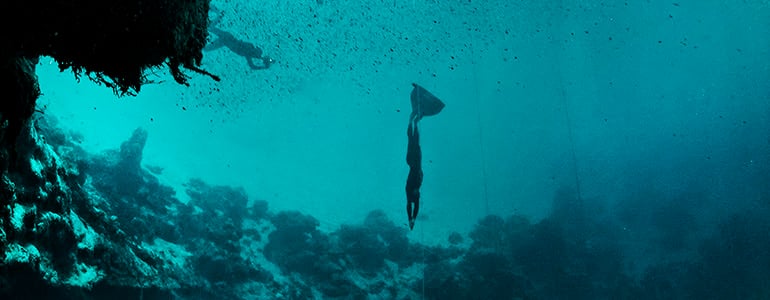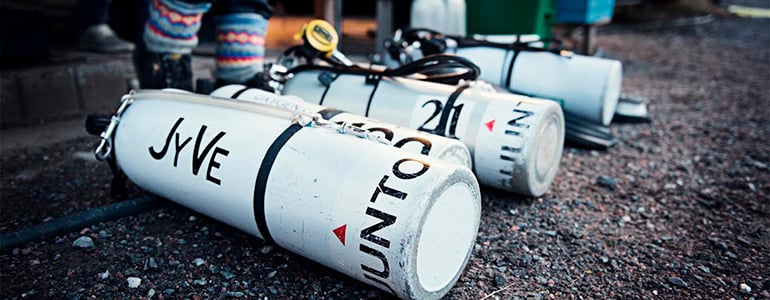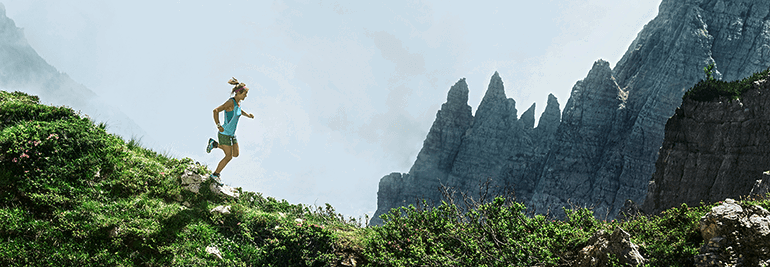

Suunto Blog
Face to Face with Greg Hill – #SuuntoAdventure Video Series, Episode 2
In the second episode of #SuuntoAdventure Video Series you will meet Canadian ski mountaineer Greg Hill.
As one of the world’s leading ski mountaineers, Greg has pioneered first descents, summited over 190 mountains and climbed and skied millions of meters. Along the way he has broken records, like skied two million vertical feet in a calendar year and 100.000 meters in a month. Read Greg's profile here.
Next episode of #SuuntoAdventure Video Series will be out in two weeks. Stay tuned!Watch also:
Face to Face with Emelie Forsberg – #SuuntoAdventure Video Series, Episode 1
Face to Face with Kilian Jornet – #SuuntoAdventure Video Series, Episode 3
Face to Face with William Trubridge – #SuuntoAdventure Video Series, Episode 4
Face to Face with Conrad Stoltz – #SuuntoAdventure Video Series, Episode 5

Hills to Climb
Make no mistake, Greg Hill is fit. Super-human fit. As one of the world’s leading ski mountaineers, he has pioneered first descents, summited over 190 mountains and climbed and skied millions of meters.
For Greg, winter isn’t complete without pushing himself. Which is why he spent March 2014 tackling 100,000 m of vertical in deep in his native Canada’s backcountry Why? “I've always been curious about my human potential and to see what I can do,” says Greg.
The March Madness campaign saw him skiing for up to 10 hours a day to cover between 3,000m to 4,000m of vertical. And if that wasn’t tricky enough, he never skied the same place twice and summited 11 mountains on the way. “It was as hard as anything I've done, waking up every morning and getting out there,” says Greg, but the long climbs were rewarded with stunning powder runs: “It was the best human-powered powder month ever! It was ridiculous. This was 97% great skiing!”
Believe it or not, that’s not Revelstoke-based Greg’s biggest vertical achievement. Back in 2010 he dedicated a year of his life to climbing and skiing two million feet (609,600 m). The challenge took him to four different countries and saw him climb 114 km and ski 1,039 days. 77 of those days saw him tackle over 3,000 meters of vertical, and his toughest day involved a 7,000m climb and ski. After reaching his target, Greg celebrated the way he knows best; by putting his skins back on and doing one more lap. “My legs felt light, my pace free and the turns great of course,” blogged Greg afterwards.
He’s clocked in a few records over the years as well. He was the first North American to climb and ski 40,000 ft (12,200m) in 24 hours, set the Spearhead traverse record in an impressive four hours one minute and was once climbed and skied Mont Blanc in a day. No wonder he was labeled one of the Top 25 fittest men in the world by Men’s Fitness in 2011.
What led Greg to these super-human feats? Trees! One million of them. His former summer job was planting spruce and pine trees. As he was paid per tree, he pushed himself to plant around 1,500 a day and discovered a talent for logging hours in the backcountry. “It taught me a lot about how to persevere,” says Greg.

A visual guide to freediving
There are some adventure sports that have only been around for a matter of years, sports like ice-climbing, kiteboarding. Then there are others that have existed for only hundreds of years, like skiing and running. But there's one sport that has been around since the dawn of time itself – freediving.
Humans have been holding their breath and diving in water for thousands of years – to fish, and more recently, to have fun and compete. In fact, humans are so uniquely adapted to going underwater it's possible to argue that we've freediving before we even became human.
What happens during a dive? Check the infographic below:
Graphic: ©zooom.at/Adi Sumic
What are those special attributes that we share with other aquatic beings that make freediving possible? It all comes down to the so-called 'dive reflex'. The main feature of this is the slowing of the heart which automatically occurs once the face is submerged in water. This has the effect of reducing oxygen consumption so you can hold your breath for longer.
The dive reflex kicks in again after approximately 25 m: the heart rate slows by as much as 50% and vasoconstriction takes place. This is where warm blood retreats from the body's extremities to protect core organs. Again, this has the effect of lengthening the time we can spend underwater.
Will Trubridge competing at the 2014 Suunto Vertical Blue ©Daan Verhoeven
At this depth most divers can stop swimming – and just freefall to the depths below. It is this part of the dive that can induce the most pleasant feelings. Many freedivers feel euphoric as they enter an almost trance-like state.
Descent can be as fast as a meter a second so a world class freediver can expect to reach a depth of 100 m after approximately 1m 30s. At this depth lung volume will have shrunk from approximately 6 lt to 500 ml. The ascent is then the most psychologically challenging part of the dive as divers fight the urge to breathe. Stomach contractions kick in. Hallucinations are not uncommon. The most dangerous part of the dive is then the last 10 m to the surface – this is where the pressure difference is at its greatest and O2 supplies at their lowest – and divers are at risk of blacking out.
But it's not just about the depth. Competition diving and its many disciplines are only one aspect of the sport. For most freedivers, the sport is just about hanging out with friends and exploring the underwater world.
Main image ©zooom.at/Agustin Munoz

Why tech divers need to know about micro bubbles
Tech diving means going deeper for longer and requires, as the name suggests, a more technical understanding of what's going on with your gases. In this second part on Suunto algorithms, we go deeper into Suunto's RGBM. For technical divers, there are two key reasons Suunto’s Reduced Gradient Bubble Model, or RGBM, algorithm stands out. The first is microbubbles. No other brand of dive computer takes into account the accumulation of inert gases on this level. At any given point, even when you’re on dry land, your veins and arteries have microbubbles filled with these inert gases. When small, they’re of no consequence.
But when they expand from time at depth, they begin to limit off-gassing. The deeper you dive, the greater a risk factor microbubbles potentially become. Suunto’s computers will force you to decrease your ascent rate when microbubbles start to become an issue.
Second, Suunto is the only brand whose computers factor in the risk of isobaric counterdiffusion (ICD), which can potentially occur on ascent. Normally, as you breathe while making your way back to the surface, you’re off-gassing; however, depending on your gas blend, these inert gases could travel further into your system as opposed to out, due to the increasing partial pressures of gases upon ascent. Suunto’s computers will alert you when you’re at risk of ICD, and will alter your ascent plan as necessary to keep you safe.
How does ICD affect divers? Hear Dr Wienke explain below and check out our other video guides to our algorithms here.
Face to Face with Emelie Forsberg – #SuuntoAdventure Video Series, Episode 1
In the first episode of #SuuntoAdventure Video Series you will meet Swedish trail runner, ski mountaineer and mountain lover Emelie Forsberg.
Emelie is all smiles – but don't let that fool you: she is fiercely competitive, too. Read Emelie's profile here.
Watch also the other episodes in the series:
Face to Face with Greg Hill – #SuuntoAdventure Video Series, Episode 2
Face to Face with Kilian Jornet – #SuuntoAdventure Video Series, Episode 3
Face to Face with William Trubridge – #SuuntoAdventure Video Series, Episode 4
Face to Face with Conrad Stoltz – #SuuntoAdventure Video Series, Episode 5

Emelie Forsberg, the unstoppable Swede
Talk to Emelie Forsberg and you'd think she's just another mountain-loving adventure girl with a fondness for baking home-made cookies. But behind the fun-loving Swede is a phenonenal podium-winning athlete – one who has excelled in several trail running disciplines – as well as competition ski-mountaineering.
A three-time Sky Running World Series champion (2012-2014), Emelie exceeds at marathon and ultra distance events. These are mountain trail races which feature several thousand meters of vertical ascent and range from 30 to over 50 km long over terrain that can range from loose rock to high altitude snow fields. To mountain runners these are races that are steeped in legend and lore, races like Zegama, Pikes Peak, Kima and modern classics like Transvulcania and the Diagonale des Fous.
She is fiercely competitive and has an impressive medal tally – too long to list here – but it's clear that winning is not her primary goal.
“I'm not going to remember a win in 40 years time — I will remember the view or the feeling,” she says.
There's a photo of her taken just before she crossed the finish line of the 80 km Mt Blanc marathon, a race that would crown her 2014 Skyrunning Ultra champion. It's distinctive for one feature – an enormous smile she can't contain. She looks as if she's just run a 5 k, far less a gruelling double marathon.
“From my heart I can truly say I enjoyed every second of it,” she wrote on her Facebook page shortly afterwards: “Pure skyrunning. J´adore! I love!”
It's Emelie's infectious love of running that shines through above all else.
“It's hard to describe it's so good,” she says. “You get a really good feeling in your legs. You feel so light – you're just flowing over the ground. You feel like really wow, I could go on forever, or wow, what a great feeling.”
It was this feeling that propelled her onto the professional circuit. One of her first wins was a local uphill mountain race in Norway's Yotunheimen national park in 2010. What is extraordinary is that prior to the race, and on the same day, Emelie decided to go for a run that became a 50 km ultra with 4,000 m of vertical.
“I was free that day so thought I would run around,” she says by way of explanation. “It was super beautiful.”
Not all races are beautiful experiences however. During the 2014 Kima she took a wrong turn and dropped from 1st to 5th position. She still finished 2nd.
And besides official races, she's also a fan of the Fastest Known Time (FKT) movement, which are self-organized and (often) solo attempts to break speed records on mountains. In 2014 she set the overall record on Sweden's highest mountain Kebnekaise, shaving 15 minutes off the previous record.
Big mountains play a big part in her life. When she's not competing Emelie loves to hang-out in the mountains, camping, hiking, climbing and skiing in winter. Of course, that also means competing on skis too, in the ski mountaineering world cup. Despite being a relative newcomer to the sport, 2015 brought Emelie her first podium, a third place in the Trofeo Marmotta.
“I like to be out in the mountains in the winter too,” she says, “and this is just another way. The training is the same as before just different on skis. It's fun to race, it's good training – actually the hardest training I have ever done!”
Where next for the Swedish athlete? Whatever it is, it's bound to involve some big mountain adventures. “The best times are when you're in the mountains, where the clock and the world outside don't count. Mountains are simplicity, freedom and responsibility — everything that I love!”














































































